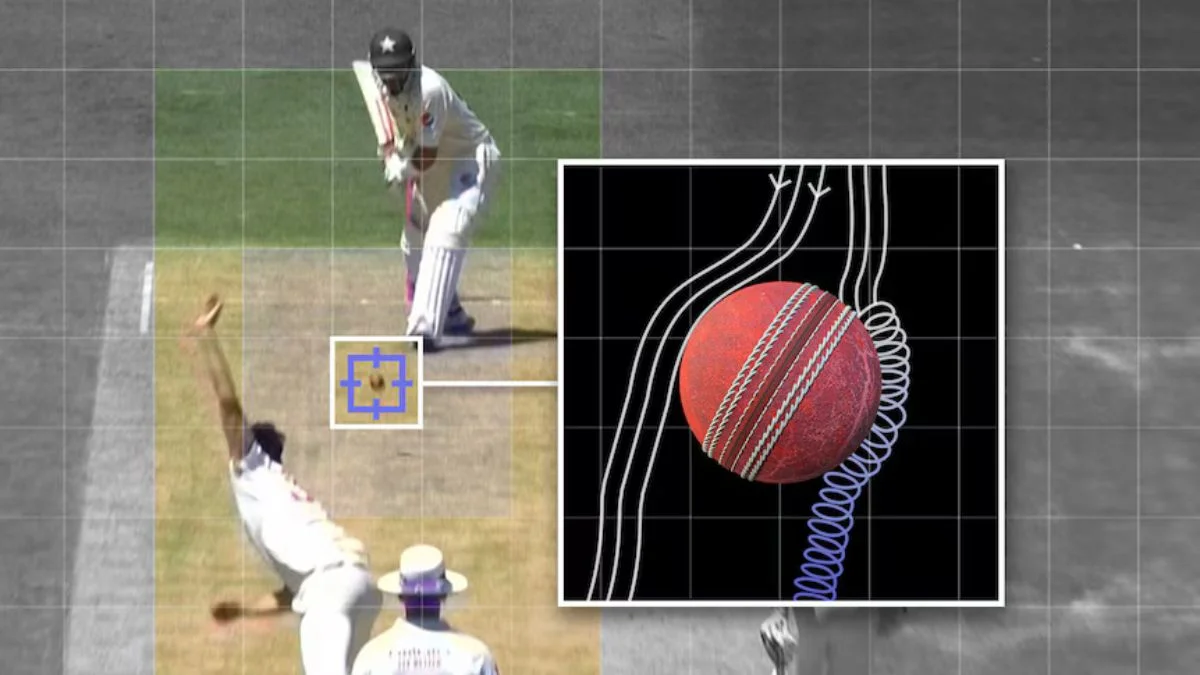
How To Swing A Cricket Ball? Swing bowling is probably the fastest bowler’s most lethal weapon. Being able to swing a cricket ball can give any bowler a huge edge on a batter. Whether you’re learning traditional swing, reverse swing, or contrast swing, learning about the grip, ball condition, and release is key.
What Is Swing Bowling?

Swing bowling is the sideways movement of a cricket ball while in flight towards the batsman. It depends highly on:
The state of the ball (roughness, shine, and seam)
Bowling speed
Grip and release style
There are three main forms of swing in cricket:
- Standard Swing
- Reverse Swing
- Contrast Swing
Method 1: How to Bowl Conventional Swing
- Use a New Ball
Conventional swing works best with a new or nearly new ball, with a shiny face one way and a definite seam.
- Hold the Ball Correctly
Hold the ball with the seam pointing at you.
Your index and middle fingers go on either side of the seam.
Rest your thumb and ring finger on the ball.
Position the shiny side towards the batsman.
- Position the Seam
The orientation of the seam is important:
For inswing (cuts into a right-handed batsman), align the seam at a 20° angle towards fine leg. The middle finger should be the last to release the ball.
For outswing (away from a right-handed batsman), tip the seam in the direction of the slips. The index finger should be the final point of contact.
- Use Ideal Speed
Traditional swing is best when bowled between 30–70 mph (48–113 km/h).
Method 2: How to Reverse Swing
- Use an Old Ball
A 40 or older ball is best for learning reverse swing. Reverse swing is when the ball swings in the opposite direction of the seam, usually to the shiny side.
- Keep Ball Condition
Keep the shiny side polished constantly to maintain its smoothness. Let the other side become rough naturally and don’t interfere. The seam should be visible and vertical.
- Grip and Seam Angle
Hold the ball on the seam, same as regular grip. This time, the rough side must be in the direction of the swing. Seam Position for Reverse Swing:
Inswing: Align the seam in the direction of the slips with the middle finger as the final contact.
Outswing: Direct the seam in the direction of the fine leg and have the index finger control the release.
- Bowl Fast
To create a reverse swing:
Throw the ball at high velocities, ideally over 85 mph (137 km/h). The more the ball is roughed up, the less speed you might require for powerful reverse movement.
Method 3: How to Bowl Contrast Swing
- Select the appropriate ball
Contrast swing demands a very rough side and a very smooth side, with a distinct seam. The ball should also be dry for optimal performance.
- Grip and Seam Location
Employ a standard seam grip.
Align the seam directly down the pitch.
- Understand the Speed Mechanics
With contrast swing, the direction of swing is related to speed:
At lower speeds (<70 mph), the ball will swing on the rough side.
At higher speeds (>70 mph), the swing is in the smooth side direction.
Note: The actual speed that causes the direction of swing can be slightly different depending on ball condition and atmospheric conditions.
Last Tips on How to Swing a Cricket Ball Effectively

- Maintain a legal ball: Do not tamper; polish only with sweat or saliva (according to match rules).
- Emphasize wrist position: A consistent wrist and vertical seam help the swing.
- Experiment in the nets: Experiment with varying seam angles and speeds to learn how the ball behaves.
Learn How to Swing a Cricket Ball Like a Pro
Whether you are an emerging fast bowler or an experienced player who wants to add another string to your bow, knowing how to swing a cricket ball is vital. From orthodox to reverse to contrast swing, every method has its strategic benefit. Practice, good grip, and care of the ball will make you a master in swing bowling and a nightmare for every batsman.
ALSO READ: ICC Hall Of Fame: Eligibility Criteria For Batters, Bowlers And Captains





